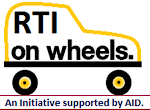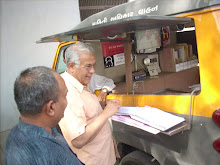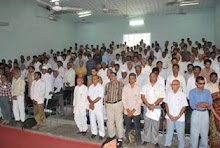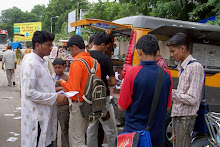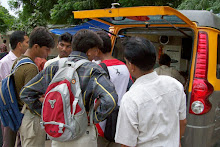Ahmedabad
Mirror: Ahmedabad: Monday, 01 December 2014.
Hemant (17
years) and Sushmita (12) are not only suffering from HIV but also coping with
the death of their youngest brother Sushil (10). They were best friends and
support to each other but things changed in September when Sushil succumbed to
HIV-induced complications and pain. The virus was transmitted to them through
their infected parents. "We weren't aware of the deadly disease until our
last child was born. Unlike my other infected children, his immunity was very
low because of the infection. Despite regular treatment, he succumbed to
it," said Summit Khan who lives in Shahpur.
There are
several parents who have lost their adolescent children to HIV infection in the
state. According to the data provided by Gujarat State Aids Control Society
(GSACS) through RTI, the death of children with HIV has doubled in the state in
2012-2013. The data was collected from the 28 ART centres across the state. In
2012, 40 children living with HIV expired and the figure surged to 80 next
year. There is the sad probability of the number of death exceeding last year's
figure this year, as till October 78 children have died because of the
infection. In the past eight years, 306 children have contacted the virus in
the city.
INEFFECTIVE
IMPLEMENTATION
The state
health department along with National Aids Control Organisation (NACO) has
initiated several schemes to prevent the spread of the infection from mother
and for early detection among children. But the shocking revelation has again
raised questions on the effective implementation of such schemes. "In 90
per cent of the cases, a child gets infected from HIV positive mother. Hence,
it is essential that medical experts take precautionary measures and counsel
the mother properly. In such cases, it is most important that the child is born
through caesarean and breast feeding is avoided," said Dr Keyur Shah, HIV
expert at HCG Hospital. He also felt that many government hospitals fail to
provide efficient treatment to newborn which further makes them vulnerable to
the infection.
The last
report of NACO in 2012 also underlined the sad conditions in the state. Gujarat
ranks fifth on the list of children living with HIV in the country. Almost
2,000 children take treatment at ART centres in the state. ART centres often
run out of stocks of HIV controlling medicine and kits. On October 11, Mirror
published an article, 'Shortage of HIV test kit puts babies at risk' which
revealed the insufficient supply of free dried blood spot (DBS) kits at
Ahmedabad Civil Hospital.
'MISREPRESENTATION
OF FACT'
However,
another group of medical experts and government officials say that the data is
misrepresentation of facts. "Earlier, there was inefficient procedure of
collection of data, hence many cases went unreported. But in recent times, due
to better recording of cases, the data provided by RTI is showing higher number
of deaths," said Dr Rajesh Sharma, HIV specialist at Sterling Hospital.
"Compared to previous years, the mortality rate has decreased among
children living with HIV so this data doesn't represent the real picture,"
he added.
GSACS
REFUSES TO COMMENT ON THE DATA
Incidentally,
there was a dip in the number of deaths reported in 2011 and 2012, but there
has been a spurt in the number since 2013. Echoing the same, an activist
working for people living with HIV said, "As the data shows, there have
been ups and downs in the number of deaths. So, as they say, there is
irregularity in recording of data."
(Names of HIV
positive children and parent changed to protect identity)
MOST
VULNERABLE
Children less
than 15 years of age accounted for 7 per cent (1.45 lakh) of all infections in
2012. India is estimated to have around 1.16 lakh annual new HIV infections
among adults and around 14,500 new HIV infections among children in 2011.
Addressing HIV in infants and children below 18 months is a significant global
challenge. HIV children are the most vulnerable and frequently present with
clinical symptoms in the first year of life. Where diagnostics, care and
treatment are not available, studies suggest that 35 per cent of infected children
die in the first year of life, 50 per cent by the age of two and 60 per cent by
the age of three.




